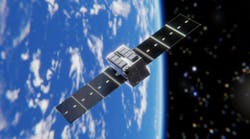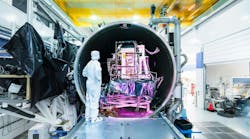By John McHale
SCOTTSDALE, Ariz.— Engineers at Motorola are integrating the Joint Services Work Station Production Program for the U.S. Army Communications-Electronics Command (CECOM) at Fort Monmouth, N.J., using primarily commercial-off-the-shelf (COTS) technology.
The Joint Services Work Station (JSWS) is a real-time, multi-sensor command, control, communications, computers, and intelligence (C4I) system that uses the same software as the Joint Surveillance Target Attack Radar System (Joint STARS) common ground station program.
"PM Joint STARS is looking forward to managing this program and providing a common workstation for all services," says Hank Wollman, program manager, JSWS, Joint STARS Program Office. "This will significantly increase interoperability of all forces through a common operating picture."
JSWS has a common software baseline, says Mendel Solomon, marketing department manager for the Motorola Integrated System division in Scottsdale, Ariz. Air Force experts may develop a piece of non-recovery software that will automatically be available to the other services once it is used, he adds.
The program uses predominantly COTS hardware and software, Solomon says. However, a small percentage of the hardware meets military specifications, such as old radios that the soldiers use, he adds.
"Our system has proven itself as a multi real-time sensor during the Kosovo campaign. It will raise confidence levels in the critical decisions needed for decisive victories on the modern battlefield," says Mark Fried, corporate vice president and general manager of the Motorola Integrated Systems Division, the business division that is the prime contractor for the JSWS. "The JSWS will allow joint-service commanders to receive data on the same platform and see situations with a reliability never before possible and make decisions with certainty."
JSWS is combat proven and supports missions such as real-time intelligence, surveillance, reconnaissance, and situation awareness, Motorola officials say. The system is suited for time-critical targeting, theater-missile defense, battlefield visualization, and battlespace management, officials say.
JSWS acquires, processes, displays, and disseminates information from several different real-time sensors including moving target indicator, synthetic aperture radars, unmanned aerial vehicles, imagery intelligence platforms, signal intelligence, and electronic intelligence.
The system uses the common ground station software that interfaces with communications equipment for secure radio, satellite, and landline communications. The primary mission equipment in the common ground station consists of Sparc Ultra II workstations from Sun Microsystems in Santa Clara, Calif., Solomon notes.
Operators in the common ground station will be able to create a common operating picture on their workstation displays using a map with different types of light symbology overlain on the map to correlate data from the various sensors, Solomon explains.
Packed in its own transit cases, the mobile JSWS can support a wide range of global missions including wartime battlefield management; low-, medium-, and high-intensity crisis management; peace keeping operations; war on drugs; and contingency operations.
The Motorola JSWS award is a $49.7 million delivery-order contract with 13 systems delivered and up to 133 expected, Solomon says.



